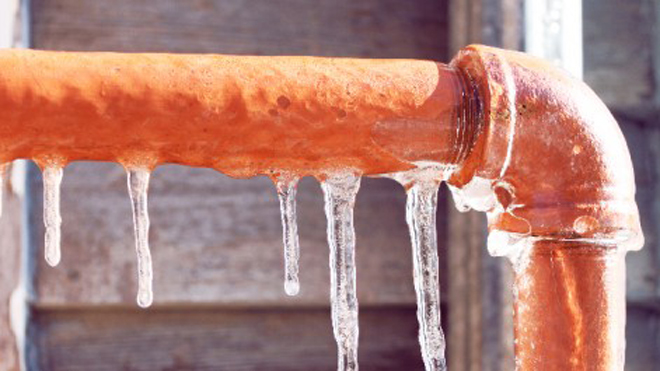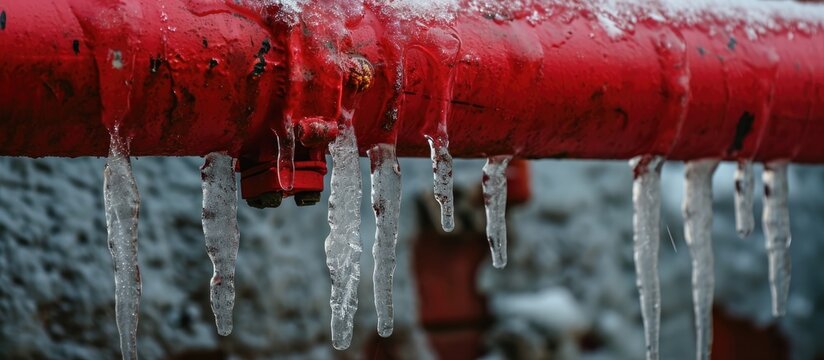The publisher is making a few good pointers relating to How To Avoid Freezing Pipes as a whole in this great article in the next paragraphs.

Cold weather can wreak havoc on your plumbing, particularly by freezing pipelines. Right here's how to avoid it from happening and what to do if it does.
Introduction
As temperatures decrease, the threat of icy pipes increases, possibly bring about costly fixings and water damage. Comprehending exactly how to prevent frozen pipelines is important for house owners in cool environments.
Prevention Tips
Insulating prone pipes
Cover pipes in insulation sleeves or make use of warm tape to shield them from freezing temperature levels. Concentrate on pipes in unheated or outside areas of the home.
Heating strategies
Maintain interior rooms effectively warmed, especially areas with plumbing. Open up cupboard doors to enable cozy air to distribute around pipelines under sinks.
How to determine frozen pipelines
Search for decreased water flow from taps, unusual smells or sounds from pipelines, and noticeable frost on revealed pipelines.
Long-Term Solutions
Structural modifications
Consider rerouting pipes away from outside walls or unheated locations. Add added insulation to attic rooms, cellars, and crawl spaces.
Upgrading insulation
Purchase top notch insulation for pipes, attics, and wall surfaces. Correct insulation aids maintain consistent temperatures and minimizes the danger of frozen pipes.
Securing Outdoor Plumbing
Yard hose pipes and exterior faucets
Detach and drain garden tubes prior to wintertime. Set up frost-proof faucets or cover exterior taps with protected caps.
Comprehending Icy Pipelines
What creates pipelines to ice up?
Pipes ice up when revealed to temperatures below 32 ° F (0 ° C) for extended periods. As water inside the pipelines freezes, it expands, putting pressure on the pipeline wall surfaces and possibly triggering them to break.
Threats and damages
Frozen pipelines can bring about water supply disturbances, property damages, and pricey repair services. Ruptured pipes can flooding homes and create substantial structural damages.
Signs of Frozen Pipes
Identifying icy pipes early can stop them from rupturing.
What to Do If Your Pipes Freeze
Immediate activities to take
If you presume icy pipes, maintain taps available to alleviate pressure as the ice melts. Utilize a hairdryer or towels soaked in warm water to thaw pipes slowly.
Verdict
Preventing frozen pipelines calls for proactive steps and fast responses. By comprehending the causes, indicators, and preventive measures, homeowners can protect their pipes throughout cold weather.
5 Ways to Prevent Frozen Pipes
Drain Outdoor Faucets and Disconnect Hoses
First, close the shut-off valve that controls the flow of water in the pipe to your outdoor faucet. Then, head outside to disconnect and drain your hose and open the outdoor faucet to allow the water to completely drain out of the line. Turn off the faucet when done. Finally, head back to the shut-off valve and drain the remaining water inside the pipe into a bucket or container. Additionally, if you have a home irrigation system, you should consider hiring an expert to clear the system of water each year.
Insulate Pipes
One of the best and most cost-effective methods for preventing frozen water pipes is to wrap your pipes with insulation. This is especially important for areas in your home that aren’t exposed to heat, such as an attic. We suggest using foam sleeves, which can typically be found at your local hardware store.
Keep Heat Running at 65
Your pipes are located inside your walls, and the temperature there is much colder than the rest of the house. To prevent your pipes from freezing, The Insurance Information Institute suggests that you keep your home heated to at least 65 degrees, even when traveling. You may want to invest in smart devices that can keep an eye on the temperature in your home while you’re away.
Leave Water Dripping
Moving water — even a small trickle — can prevent ice from forming inside your pipes. When freezing temps are imminent, start a drip of water from all faucets that serve exposed pipes. Leaving a few faucets running will also help relieve pressure inside the pipes and help prevent a rupture if the water inside freezes.
Open Cupboard Doors
Warm your kitchen and bathroom pipes by opening cupboards and vanities. You should also leave your interior doors ajar to help warm air circulate evenly throughout your home.

I hope you liked our part about Winter Plumbing Precautions: Preventing Frozen Pipes. Many thanks for finding the time to read our short article. Make sure you take the time to share this article if you liked it. I praise you for your time. Kindly come by our site back soon.
Top Article